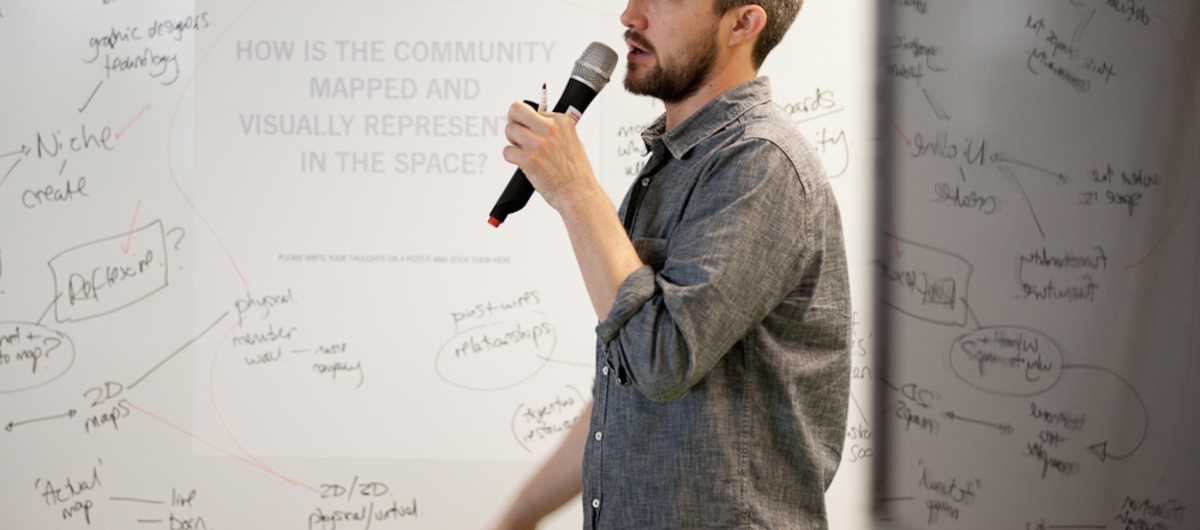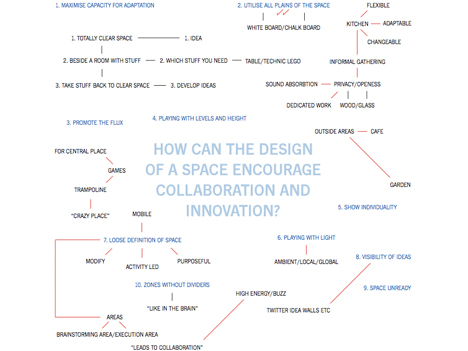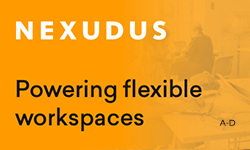TILT were recently asked to deliver a design workshop as part of the recent Coworking Europe conference in Berlin. We used the opportunity to facilitate a collective brainstorm around three important design questions that have been raised repeatedly during our experience of designing collaborative working spaces internationally. Our graphical output of the session is available here if you want to read through the themes in greater depth.
The questions asked were:
1. How can the design of a space encourage collaboration and innovation?
2. How is the community mapped and visually represented in the space?
3. How can the design of space promote autonomous behaviour from its members?
Your space is never finished
The quality and breadth of ideas presented by the participants reflected their wealth of experience as coworking space operators. Their appetite for testing new and interesting design concepts with their spaces was also apparent and reflected the creativity of coworking movement. What follows is a discussion of some of the key insights that emerged.
The design ideas for encouraging collaboration included the specific, ranging from the intelligent use of light to impact people’s mood and create a certain tone, to altering floor/ceiling levels to encourage subtle differentiation between zones within the overall space.
The important point is that to create divisions of function and use within the space, we don’t necessarily need to create physical dividers or objects. These non-physical means are therefore behavioural and the key challenge for any coworking space is to create a culture that influences behaviour.
Giving members the opportunity to influence and impact the design of the space was an important and recurring theme. Coworking spaces shouldn’t necessarily be finished, or be seen as such, instead they can operate in a perpetual beta-mode, evolving over time according to the needs and wishes of those who use them. This concept is key to underlining shifts in design thinking, something that has great traction for the cowork movement. How can things be designed to incorporate iteration and change?
Allow members to play with the space
A community of users should feel that they can play with the space and utilise every aspect of it: a white wall may be used as a projection screen, a glass wall could be a writable surface, for example. This notion of multi-functionalism creates a sense of flux, of exciting things about to happen. Allowing users to engage with the space also helps build a sense of ownership, and like a space that is in flux, helps ideas spread and facilitates a more relaxed sharing culture.
Understanding the identities of the members is important and the exercise of mapping the individuals within the community is something that can be done by the members themselves. Local graphic designers could be encouraged to develop member profiles with basic member information to be presented within the space, for example.
Due to the dynamic nature of the community, there cannot be an over-reliance on 2D member maps: they would become too complex and the task of updating them to onerous. It’s more effective to blend their use with new technologies that are reflective of the constantly changing activities of the members, a twitter wall, for example.
An exciting opportunity for coworking is the synthesising of the virtual and the physical in a way that is truly more than the sum of its parts. Too blend real world physicality with data sets, online bandwidth and virtual connectivity would approach something like a ‘virtual reality’ for coworking.
However, it is interesting that even with the strides in technology that has enabled coworking to flourish we still crave physical connection to make it worthwhile. It is an endlessly fascinating paradigm and one well represented in the experiences of those at the conference.
Encouraging members to feel ownership of the space and behave independently should be seen as an important product of the design of a space. Spaces have this ability to build relationships and moreover to communicate member activity to the world outside.
Windows that face out onto a street can be canvases to display member projects, for example. Ground floor coworking spaces could have shop displays profiling and even selling the products of the members who work inside them. These are exciting opportunities for so called ‘make’ spaces, and give weight to the idea that one future for coworking is the full ecology of work in a physical sense, actual products as well as services.
The users of coworking spaces are largely content to serve and manage themselves but they need the tools to do this adequately. Availability of laptop stands, stationary, headphones, and free tea/coffee for example, can allow members to customise and control their own work experience. Members can also manage their own interactions with others using simple visual cues such as displaying a red/green cube beside their desk to denote their openness to distraction and interaction.
Having these tools easily available to members maximises the capacity for space adaptation, shaped by the users. Paid hosts and management teams still however have an extremely important role to play in facilitating member engagement, curating their experience and evolving the space according to usage patterns.
They also ensure that all basic non shared aspects of the coworking model, e.g. payments, are delivered simply and efficiently so that efforts can be focused on those aspects that can be shared, e.g. an events programme.
Reflect your users
As expected the overlap between the three questions was considerable. This spectrum of convergence and divergence is an essential factor for the success of a coworking space. So much in flux, so many differing needs and so many alternating rhythms creates dependencies amongst the themes of the questions that need to be addressed constantly:
If a space is too autonomous could it become impossible to foster interaction? Would a too effective member mapping tools reduce the opportunity for members to connect serendipitously? There are many seemingly contradictory questions such as these.
So the key theme that emerged consistently is that coworking spaces should not be overly prescriptive in their design. Instead they need to be sufficiently open to interpretation from their users and change over time This openness provides room for members to take control of shaping and hosting their environment which in turn helps to engender a more collaborative and sharing culture within the space.
:::
Oliver Marlow is Co-founder of TILT, a design practice that specialises in delivering coworking spaces. www.studiotilt.com Twitter: @studiotilt













